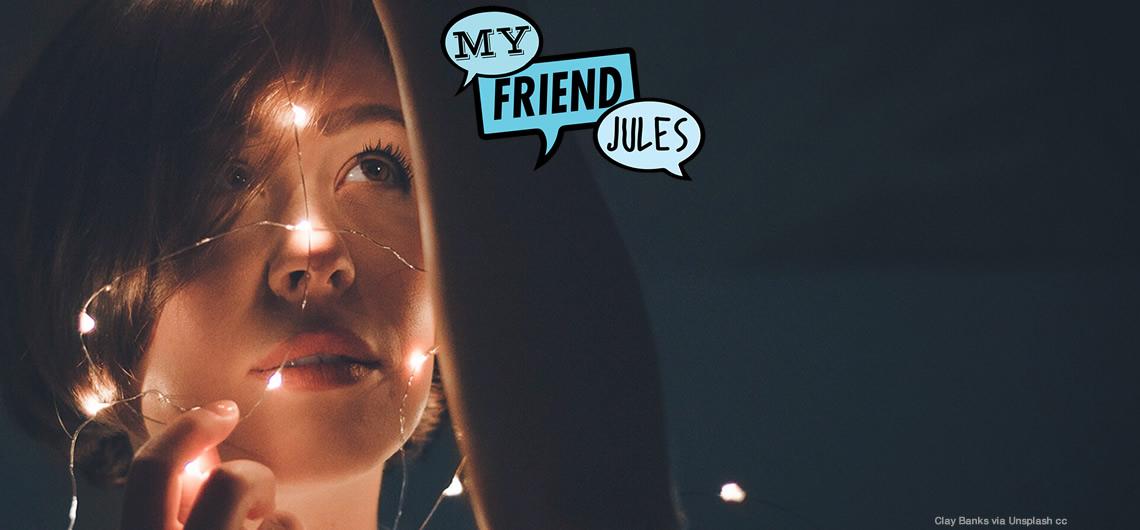Welcome to this Stories of Change self-awareness session, presented by Ryan Bramley. The title of today’s session is called ‘Being More Mindful of Jules: An Exercise in Self-Awareness’.
Being more mindful of Jules is about becoming more aware of Jules: what Jules does; where Jules comes from; and how Jules gets here. By doing this exercise, we are helping ourselves to become more aware of our relationship to Jules, and opening up further possibilities to revalue, build and develop that relationship.
Before we begin, you should find a comfortable place to sit, preferably in your own living room. You should also turn any unnecessary source of artificial light off in the room, other than the light of the device you’re reading this exercise on, and any other light you may need to see the room around you. Jules will be almost entirely absent from the room for the first part, which should allow you to think more freely about your relationship with them. You may also find this exercise works best in the daytime, with any curtains or blinds left open, to let natural light in.
Relax your body, by closing your eyes, and focusing on your natural breathing pattern...in...out...in...and out...
Now, slowly open your eyes, and tilt your gaze gently upwards, towards the ceiling. Scan the ceiling - from left to right; right to left; however you feel most comfortable. Here, we are not looking for anything in particular, but are simply becoming more aware of what is there in front of us.
Once you have scanned the whole surface of the ceiling, I want you to close your eyes for a moment, and imagine what you have just seen. Now, with your eyes still closed, I want you to picture the nearest light bulb. Can you see it? What kind of lightbulb is it? How far away is the light bulb from you? How far away is the light bulb from the switch that turns it on?
Gradually open your eyes, and fix your gaze onto that light bulb. Is it the kind of light bulb you thought it was? Does it match the image of the light bulb you saw in your mind?
Now, making sure the light bulb is turned off, and not too hot to touch, carefully take that light bulb out of its socket [or, if you are under 16, or the light bulb is not within a safe reaching distance, please ask a responsible and able adult to do this for you]. Did it click out of position, like a bayonet cap? Or did it screw out, like a an Edison screw cap? Perhaps you couldn’t remove it at all - perhaps it was an LED light, or a strip light?
[If the nearest light bulb is not removable, then you can find another light bulb in your house to remove. And if there are no removable light bulbs in your home, you may stop this exercise here, and simply marvel at the phenomenal 21st Century advances of domestic lighting technology.]
Once you have removed the bulb, place it in front of you, so you can see it clearly. You might place it on a coffee table, or on a chair, or simply in your own hand. Pause now, and take a moment to think about where that light bulb came from. What materials were used to make it? Where did those materials come from?
Now, picture the light bulb being made. Is it being made by a person? Can you see the expression on their face, as they are making it? Can they see you, looking upon their creation at this very moment? Perhaps it was built by a faceless machine instead?
The purpose of this exercise, and these lines of thought in particular, is not to come up with the ‘right’ answers. This is not a test. Instead, we are simply thinking about things in a different, and potentially new way. I wonder, have you ever thought this much about a light bulb before?
Still holding that question in your mind, slowly rise from your seated position, and carefully place the light bulb back in the socket - again, paying attention to the way the bulb fits perfectly into place.
Find the switch. Before you press it, pause to think for a moment: when you flick this switch, what is going to happen? Will Jules come back into to room quickly, or slowly? Then, think beyond the switch: where must Jules travel from to be here? Will Jules come far? Where, or what, was the source of Jules’ journey? How much will it cost for Jules to be here with you today?
Flick the switch. Let Jules back into the room.
How does having Jules with you again make you feel? Does Jules’ arrival make you feel good? Does it make you happy? Do you feel differently about Jules, in this very moment, than you usually do?
Perhaps it would help, every once in a while, to tell Jules how you feel about them? To make Jules feel wanted? To appreciate Jules for the effort it has taken to bring them here to be with you today; to always be with you, unconditionally?
Perhaps it would help, also, for Jules to tell you how they feel about you? Are you spending your time with Jules wisely? Does Jules see it that way, too?
By being kinder to Jules, we are simultaneously being kinder to ourselves. After all, there’s only so much ‘Jules’ to go around.

My Friend Jules explores new ways for us to think about energy and to share points of view about this vital common resource. It recognises that our energy decisions depend as much on human factors as science. By contributing your unique story about Jules, you help us more fully understand our society’s complex relationship to energy.
Report this content
If you feel this content is inappropriate or want to report a technical issue - do so here.

